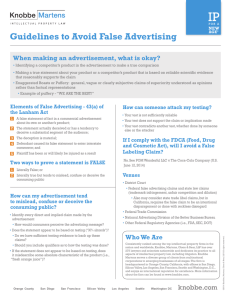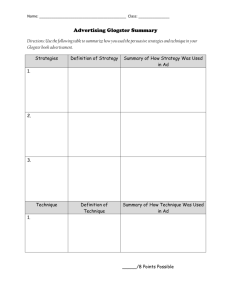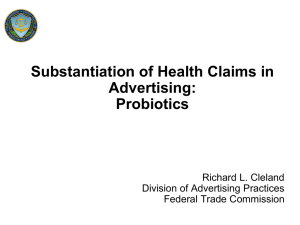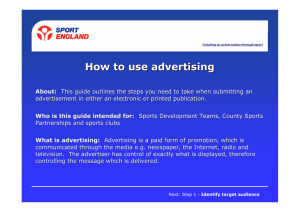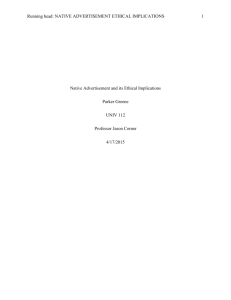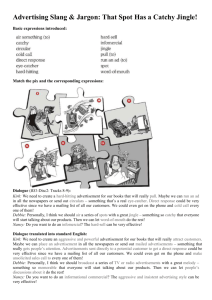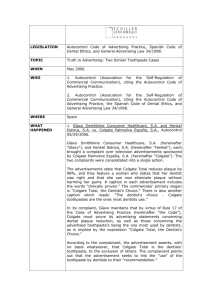ANALYSIS OF ADVERTISING AND MASS COMMUNICATIONS
advertisement
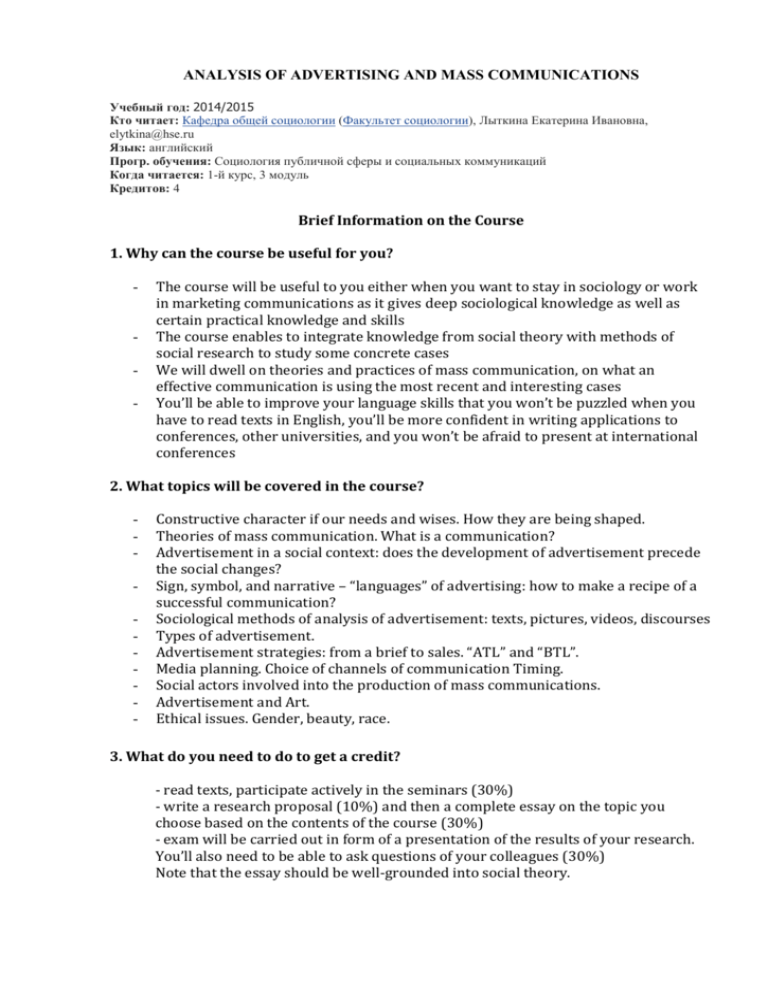
ANALYSIS OF ADVERTISING AND MASS COMMUNICATIONS Учебный год: 2014/2015 Кто читает: Кафедра общей социологии (Факультет социологии), Лыткина Екатерина Ивановна, elytkina@hse.ru Язык: английский Прогр. обучения: Социология публичной сферы и социальных коммуникаций Когда читается: 1-й курс, 3 модуль Кредитов: 4 Brief Information on the Course 1. Why can the course be useful for you? - - The course will be useful to you either when you want to stay in sociology or work in marketing communications as it gives deep sociological knowledge as well as certain practical knowledge and skills The course enables to integrate knowledge from social theory with methods of social research to study some concrete cases We will dwell on theories and practices of mass communication, on what an effective communication is using the most recent and interesting cases You’ll be able to improve your language skills that you won’t be puzzled when you have to read texts in English, you’ll be more confident in writing applications to conferences, other universities, and you won’t be afraid to present at international conferences 2. What topics will be covered in the course? - Constructive character if our needs and wises. How they are being shaped. Theories of mass communication. What is a communication? Advertisement in a social context: does the development of advertisement precede the social changes? Sign, symbol, and narrative – “languages” of advertising: how to make a recipe of a successful communication? Sociological methods of analysis of advertisement: texts, pictures, videos, discourses Types of advertisement. Advertisement strategies: from a brief to sales. “ATL” and “BTL”. Media planning. Choice of channels of communication Timing. Social actors involved into the production of mass communications. Advertisement and Art. Ethical issues. Gender, beauty, race. 3. What do you need to do to get a credit? - read texts, participate actively in the seminars (30%) - write a research proposal (10%) and then a complete essay on the topic you choose based on the contents of the course (30%) - exam will be carried out in form of a presentation of the results of your research. You’ll also need to be able to ask questions of your colleagues (30%) Note that the essay should be well-grounded into social theory. 4. Course structure with References: The course will be held once a week, each lecture (but for the first and last week) will be followed by a seminar. In the first week, there will be two lectures and in the last week, there will be two seminars. Here is a thematic overview of the course. Week 1 – Topic “Consumer Society: How our needs are created?” Bauman, Zygmunt (2007): Consuming Life. Cambridge: Polity. Baudrillard, Jean (1998): The Consumer Society: Myths and Structures: SAGE Publications LTD. Veblen, Thorstein (1899): The Theory of the Leisure Class: an economic study of institutions. Available at: http://www.gutenberg.org/files/833/833-h/833-h.htm Marcuse, Herbert (1991). One-dimensional Man: studies in ideology of advanced industrial society. London: Routledge. Simmel, Georg. Fashion. The American Journal of Sociology, Vol. 62, N6. Pp. 541-558. Week 2 – Topic “Theories of Mass Communication” Pearce, K.J. (2009). Media and Mass Communication Theories. In Encyclopedia of Communication Theory (p. 624-628). SAGE Publications. Hartley, J.: "Mass communication", in O'Sullivan; Fiske (eds): Key Concepts in Communication and Cultural Studies (Routledge, 1997). Week 3 – Topic “Advertisement. It’s Means of Communication.” Judith Williamson Decoding Advertisements. Ideology and Meaning in Advertising. London, New York: Marion Boyars. 1994. O'Guinn, T. C. Advertising and integrated brand promotion. Thomson SouthWestern, 2006. Week 4 – Topic “Sociological methods of analysis of advertisement: texts, pictures, videos, discourses” Knoblauch, Hubert; Baer, Alejandro; Laurier, Eric; Petschke, Sabine &Schnettler, Bernt (2008). Visual Analysis. New Developments in the Interpretative Analysis of Video and Photography [30 paragraphs]. Forum Qualitative Sozialforschung / Forum: Qualitative Social Research, 9(3), Art. 14, http://nbnresolving.de/urn:nbn:de:0114-fqs0803148. Keller R. Analyzing Discourse. An Approach from the the Sociology of Knowledge // Forum: Qualitative Social Research. Volume 6, No. 3, Art. 32 (Sept. 2005). Allen C. T., Machleit K. A., Marine S. S. (1988) "On Assessing the Emotionality Of Advertising via Izard's Differential Emotions Scale", in Advances in Consumer Research, Vol. 15, pp. 226-231. Week 5 – Topic “The Art to Create a “Good” Message” Doug Holt, How Brands Become Icons. Boston: Harvard Business School Press, 2004 O'Guinn, T. C. Advertising and integrated brand promotion. Thomson SouthWestern, 2006. Advertising Age. Available at: http://adage.com Week 6 – Topic “From a brief to sales. “ATL” and “BTL.”Media planning.” Sissors, J. Z. Advertising media planning. New York McGraw-Hill, 2002. Homer Pamela (2009) Product Placements: The Impact of Plasement Type and Repetition on Attitude, Journal of Advertising, vol. 38, no 3 (Fall 2009), pp. 21-31. O'Guinn, T. C. Advertising and integrated brand promotion. Thomson SouthWestern, 2006. Ramsay Matt (2010) Social media etiquette: A guide and checklist to the benefits and perils of social marketing // Journal of Database Marketing & Customer Strategy Management. Week 7 – Topic “Ethical issues. Gender, beauty, race” Jean Kilbourne. Killing Us Softly 4: Advertising's Image of Women (available at: http://www.youtube.com/watch?v=PTlmho_RovY) Goffman Erving. Gender Advertisements. Harper & Row Publishers, 1979.

